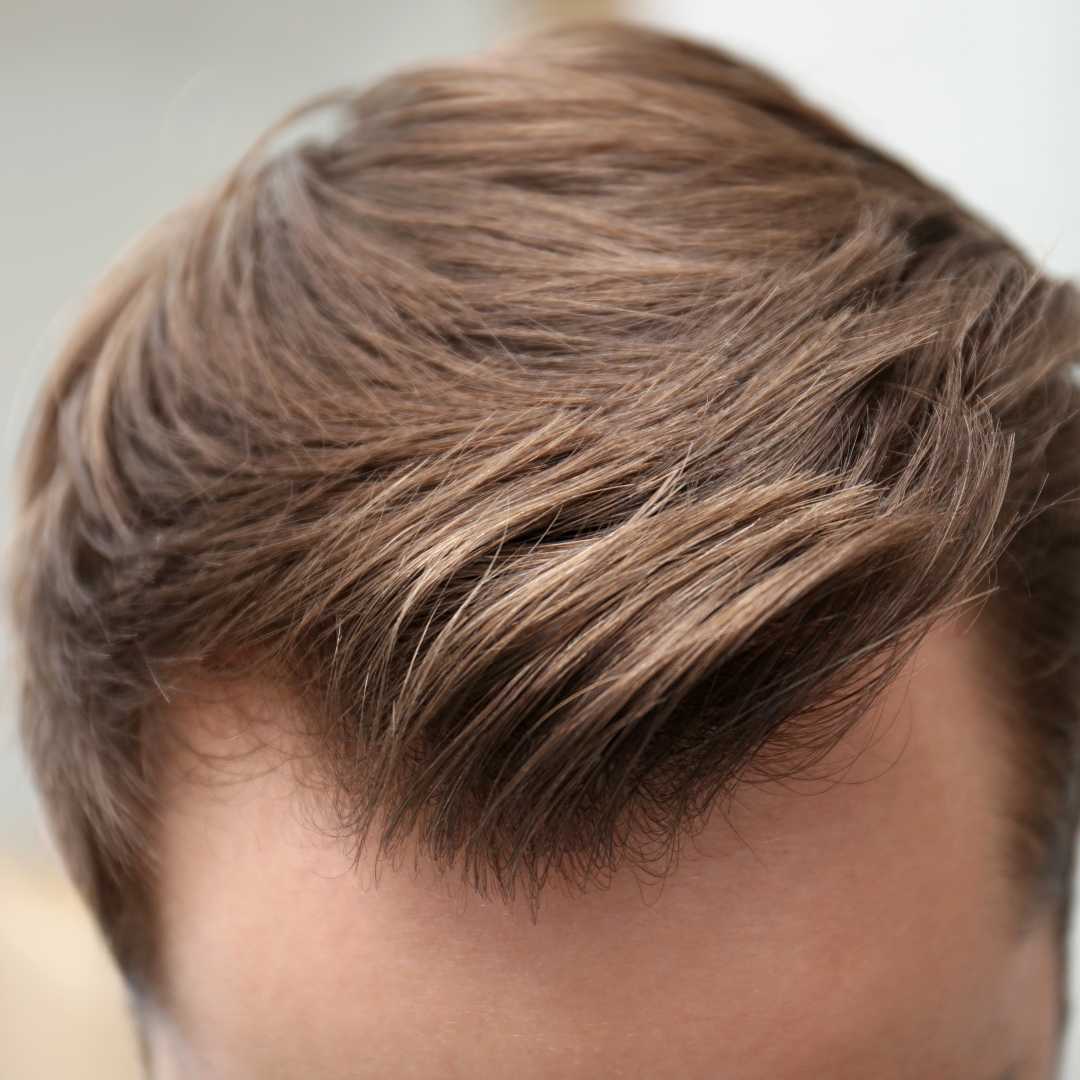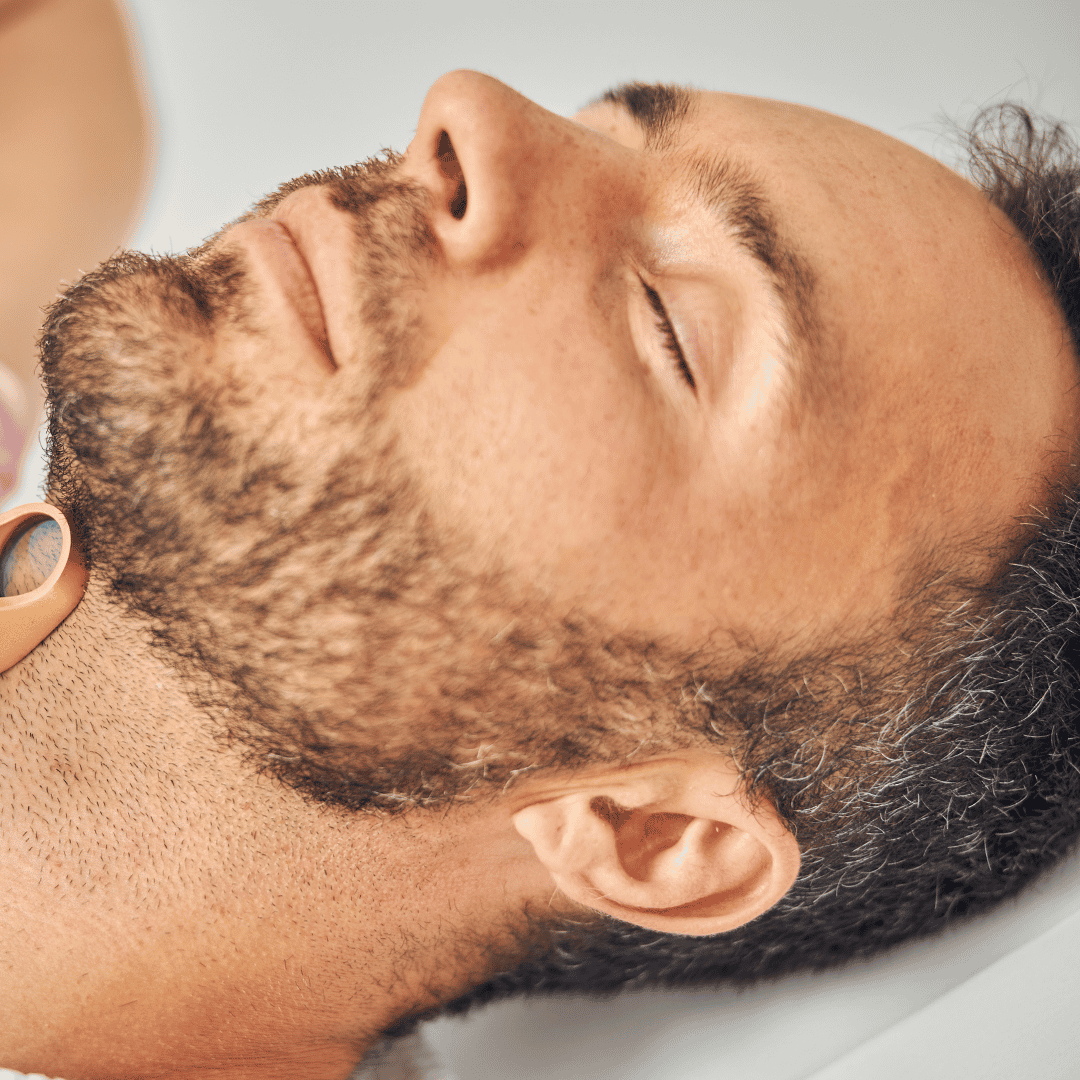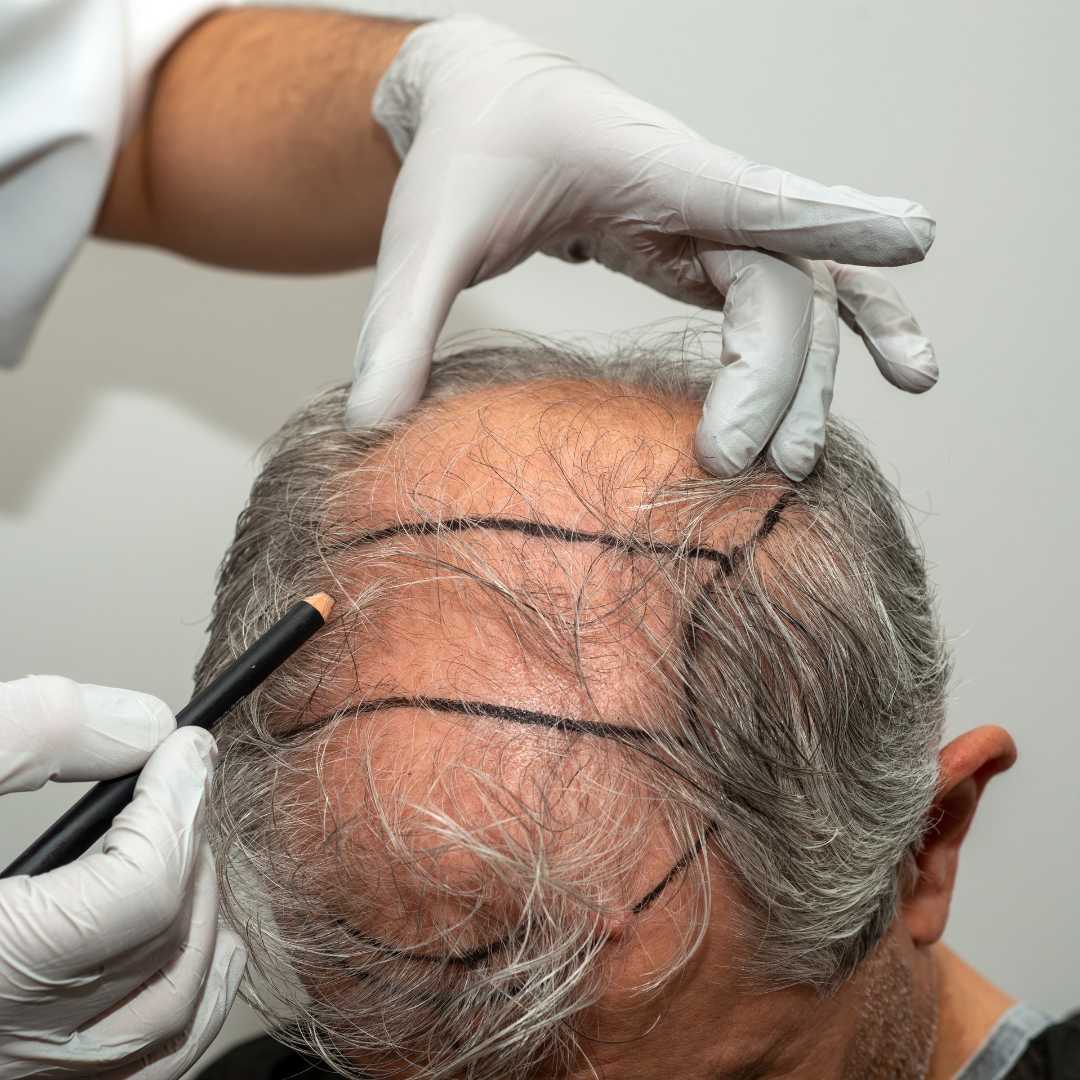
Smart Choices - Getting a Hair Transplant Abroad
Losing hair can be a really frustrating experience, impacting not just your appearance but also your confidence. If you've been looking in the mirror and wishing for a fuller head of hair, you're not alone. Millions globally seek solutions for hair loss, and one of the most effective and lasting options is a hair transplant.
A hair transplant isn't just about moving hair; it's about artfully redistributing your existing healthy hair to create a natural, fuller look. It's a procedure that has seen incredible advancements, offering results that are virtually undetectable. But what if the cost or wait times in your home country are holding you back? That's where medical tourism, specifically for a hair transplant abroad, comes into play.
Medical tourism opens up a world of possibilities, allowing you to access top-tier clinics and highly skilled surgeons in various international destinations. These locations often provide the same, if not better, quality of care at a significantly lower cost, making your dream of natural hair restoration a tangible reality. This comprehensive guide will walk you through everything you need to know about getting a hair transplant overseas, from understanding the procedures to navigating your medical travel journey, ensuring you make an informed decision for your hair and your well-being.
What are the different types of hair transplant procedures available?
When considering a hair transplant, understanding the different techniques is crucial. The two primary methods are Follicular Unit Extraction (FUE) and Follicular Unit Transplantation (FUT), both aiming to achieve natural-looking hair restoration by transplanting healthy hair follicles.
Follicular Unit Extraction (FUE): This is the most popular and minimally invasive method. In FUE, individual hair follicles are extracted directly from the donor area (typically the back or sides of the head) using a micro-punch tool. These individual grafts are then meticulously implanted into the balding areas. The main advantages of FUE are that it leaves no linear scar, resulting in tiny, almost invisible dot scars, and offers a quicker recovery time. It's ideal for those who prefer to wear their hair short or have limited donor hair, though it may take longer for the surgeon to perform due to the individual extraction process.
Follicular Unit Transplantation (FUT): Also known as the strip method, FUT involves surgically removing a small strip of scalp tissue from the donor area. This strip is then dissected under a microscope into individual follicular units. These units are subsequently transplanted into the recipient sites. While FUT can harvest a larger number of grafts in a single session and is often more cost-effective per graft, it does leave a linear scar in the donor area, which might be visible if you choose to wear your hair very short. It's a good option for individuals requiring a large number of grafts or those with advanced hair loss.
Both FUE and FUT can yield excellent, natural-looking results when performed by an experienced surgeon. The choice between them often depends on your specific hair loss pattern, donor hair characteristics, desired outcome, and personal preference regarding scarring and recovery. Many clinics also offer variations like DHI (Direct Hair Implantation), which is essentially an FUE technique using a specialized implanter pen for direct placement without pre-made incisions.
Who is an ideal candidate for a hair transplant?
Determining if you're a good candidate for a hair transplant involves several factors beyond just wanting more hair. It's a precise procedure that relies on certain biological and medical conditions to ensure successful and lasting results. The best candidates often share a few common traits and conditions.
Firstly, the primary cause of hair loss should ideally be androgenetic alopecia, commonly known as male or female pattern baldness. This type of hair loss is genetic and permanent, making it highly responsive to transplant procedures because the hair follicles from the donor area (usually the back and sides of the head) are genetically resistant to balding. Other types of hair loss, such as alopecia areata or hair loss due to certain medical conditions or medications, might not be suitable for transplantation without addressing the underlying cause.
Secondly, sufficient donor hair is critical. The success of a hair transplant hinges on the availability of healthy, permanent hair follicles in your donor area. If your donor area is thinning or lacks adequate density, there may not be enough viable grafts to achieve a satisfactory result in the balding areas. A good candidate will have a dense donor area that can withstand the extraction of grafts without looking noticeably thinner. Finally, overall good health and realistic expectations are paramount. Patients should be free from any medical conditions that could complicate surgery or recovery. Understanding that a hair transplant redistributes existing hair rather than creating new hair, and that results unfold gradually, is key to patient satisfaction.
What causes hair loss that might lead to a transplant?
Hair loss is a widespread concern, and its causes are diverse, ranging from genetic predispositions to lifestyle factors. Understanding the root cause is crucial for determining the most effective treatment, including whether a hair transplant is a viable solution.
The most prevalent cause of hair loss suitable for transplantation is Androgenetic Alopecia, or pattern baldness. This genetic condition affects both men and women, leading to a predictable pattern of hair loss. In men, it often results in a receding hairline and thinning on the crown, while in women, it typically manifests as overall thinning with a preserved hairline. This type of hair loss is permanent because the hair follicles become sensitive to dihydrotestosterone (DHT), a derivative of testosterone, causing them to shrink and eventually stop producing hair.
Other causes of hair loss, while not always leading to a transplant directly, can exacerbate existing conditions or cause temporary thinning. These include: Hormonal changes (e.g., pregnancy, menopause, thyroid issues), Medical conditions (e.g., alopecia areata, scalp infections, trichotillomania), Medications (e.g., for cancer, depression, heart problems), Stress (telogen effluvium, often temporary), and Nutritional deficiencies (e.g., lack of iron, protein, or vitamins). For these non-genetic causes, addressing the underlying issue is often the first step, and a hair transplant might be considered only after other treatments have been explored or if permanent damage to the follicles has occurred.
Why consider a hair transplant abroad?
The decision to undergo a hair transplant is significant, and choosing to do it abroad adds another layer of considerations. However, for many, the benefits far outweigh the logistical challenges, making international medical travel an increasingly popular choice for hair restoration.
The primary driver for seeking a hair transplant abroad is often the substantial cost savings. Procedures in countries like Turkey, Mexico, or India can be 50-70% cheaper than in Western Europe, North America, or Australia, without compromising on quality. This cost difference is typically due to lower operational costs, labor wages, and medical malpractice insurance in these countries. For someone needing a large number of grafts, these savings can amount to thousands of dollars, making a life-changing procedure affordable.
Beyond cost, many international clinics boast state-of-the-art facilities and highly experienced surgeons who specialize exclusively in hair transplantation, performing hundreds of procedures annually. This level of specialization often translates to superior results and expertise. Furthermore, waiting lists for elective procedures can be long in some countries; traveling abroad often means immediate access to treatment. Finally, the allure of combining your medical journey with a vacation adds an appealing dimension, allowing for discreet recovery in a beautiful setting while experiencing a new culture, transforming a medical procedure into a unique travel opportunity.
How much does a hair transplant cost worldwide?
One of the most compelling reasons for patients to explore hair transplants abroad is the dramatic difference in cost. The price can fluctuate wildly depending on the country, the clinic's reputation, the surgeon's experience, the number of grafts needed, and the technique (FUE or FUT).
While a hair transplant can be an investment, understanding the global price landscape can help you make an informed decision and find the best value for your money. Generally, Western countries have higher costs due to higher living expenses, labor costs, and extensive insurance requirements. Conversely, countries that have established themselves as medical tourism hubs can offer highly competitive prices.
Below is a general estimate of hair transplant costs (per 2000-3000 grafts, common for a full session) in various popular destinations. These are average ranges and can vary based on individual circumstances and chosen packages, which often include accommodation and transfers.
| Country | Estimated Cost Range (USD) | Key Factors for Cost |
|---|---|---|
| United States | $8,000 - $18,000+ | High overheads, surgeon fees, insurance. |
| United Kingdom | $7,000 - $15,000+ | Similar to US, high labor costs. |
| Turkey | $2,000 - $6,000 | Established medical tourism, lower operational costs, package deals. |
| Mexico | $3,000 - $8,000 | Proximity for US patients, lower labor costs. |
| India | $2,000 - $5,000 | Highly competitive, large number of experienced doctors. |
| Thailand | $4,000 - $9,000 | Reputable healthcare, combining treatment with tourism. |
How to choose a safe and reputable clinic for hair transplant overseas?
Choosing the right clinic for your hair transplant, especially when traveling abroad, is the most critical step to ensure a successful outcome and a safe experience. Diligent research and careful consideration are paramount.
Start by verifying the credentials and experience of the surgeons. Look for doctors who are board-certified in their specialty and have extensive experience specifically in hair transplantation. Check how many years they've been performing transplants and their success rates. Research the clinic's reputation by reading patient reviews and testimonials on independent platforms. Look for consistent positive feedback regarding results, patient care, hygiene, and communication. Before-and-after photos of previous patients are invaluable; they provide visual proof of the surgeon's skill and the clinic's ability to deliver natural-looking results.
Furthermore, ensure the clinic holds international accreditations, such as Joint Commission International (JCI), which signifies adherence to global standards of patient safety and quality of care. Don't hesitate to ask detailed questions about the procedure, the technology used, the support staff's qualifications, and the aftercare plan. Transparency in pricing and what's included in the package (e.g., accommodation, transfers, follow-ups) is also a strong indicator of a trustworthy clinic. A reputable clinic will provide comprehensive information and make you feel comfortable and informed throughout the process.
What are the common destinations for affordable hair transplants?
Several countries have emerged as global leaders in hair transplant medical tourism, attracting patients from all corners of the world due to their combination of affordability, quality care, and accessibility. These destinations have invested heavily in medical infrastructure and training, making them top choices for individuals seeking cost-effective hair restoration.
Turkey stands out as perhaps the most famous destination for hair transplants. Istanbul, in particular, is often dubbed the "hair transplant capital of the world." The country offers incredibly competitive package deals that often include the procedure, accommodation, transfers, and post-operative care, all for a fraction of the cost in Western countries. Turkish clinics are known for their high volume of procedures, leading to highly experienced surgeons and a streamlined patient experience.
Mexico is a popular choice for patients from North America, offering proximity and significant cost savings. Cities along the border or major medical hubs like Guadalajara and Cancun host numerous reputable clinics. Similarly, India provides highly skilled surgeons and modern facilities at very affordable rates, making it an attractive option, especially for those in Asia and the Middle East. Lastly, Thailand, renowned for its excellent healthcare and tourism, combines quality medical services with a vibrant holiday experience, making recovery a more pleasant affair. These countries not only offer economic advantages but also boast a high standard of medical expertise in the field of hair transplantation.
What should I expect regarding travel and recovery when getting a hair transplant abroad?
Embarking on a medical journey abroad requires careful planning, especially concerning your travel logistics and post-operative recovery. Understanding what to expect can help you prepare adequately for a smooth and successful experience.
Typically, a hair transplant trip abroad lasts between 3 to 7 days. This duration allows for your initial consultation, the procedure itself (which can take 6-8 hours), and at least 1-2 days of initial recovery and follow-up checks before flying back home. Many clinics offer comprehensive packages that include airport transfers and accommodation, simplifying your travel arrangements. It's advisable to fly direct if possible and choose airlines that allow for comfortable seating, as long flights can be tiring. Be sure to check airline policies on head coverings and potential swelling during your return journey.
Post-procedure recovery is crucial for graft survival and optimal results. You'll likely experience some swelling, redness, and scabbing in both the donor and recipient areas. Your clinic will provide detailed aftercare instructions, which typically include: using prescribed medications (painkillers, antibiotics), gentle washing techniques, avoiding direct sun exposure, strenuous activities, and touching the grafts. Most clinics provide a special neck pillow to help protect the transplanted area while sleeping. While the initial healing phase is critical in the first 10-14 days, the transplanted hair will shed within 2-4 weeks, and new growth will begin after 3-4 months. Full results are typically visible after 12-18 months. Be prepared for this timeline and follow all aftercare advice diligently.
Are there any risks unique to getting a hair transplant through medical tourism?
While medical tourism offers numerous advantages, it's essential to be aware of potential risks that can be unique to receiving treatment outside your home country. Being informed allows you to take proactive steps to minimize these risks.
One significant concern is the potential for **language barriers**. While many clinics catering to international patients will have English-speaking staff, miscommunication can still occur, particularly concerning detailed medical instructions or expressing concerns. Always ensure you have a clear understanding of all pre- and post-operative care instructions. Another risk is **varying medical standards and regulations**. Not all countries have the same stringent oversight as others, which could impact hygiene, equipment quality, and staff qualifications. This highlights the importance of choosing accredited clinics and thoroughly vetting surgeons.
Furthermore, **limited post-operative follow-up** once you return home can be a challenge. While clinics abroad provide initial aftercare, ongoing check-ups or addressing rare complications from a distance can be difficult. Discussing the virtual follow-up options or local doctor collaboration is crucial. Finally, **legal recourse** in case of complications can be complex. Laws vary by country, and pursuing legal action in a foreign jurisdiction can be costly and time-consuming. Thorough research, choosing a reputable provider, and having a clear contract outlining services and responsibilities can significantly mitigate these unique risks associated with medical tourism.
What is the hair transplant recovery timeline and aftercare?
The journey to a fuller head of hair doesn't end when the surgery is over; the recovery and aftercare period are equally vital for ensuring the transplanted grafts survive and thrive. Understanding this timeline helps manage expectations and promotes optimal results.
Immediately After (Days 1-7): You'll experience some redness, swelling (especially on the forehead and around the eyes), and small scabs forming around each transplanted graft. The donor area might also be tender. Your clinic will provide saline spray to keep the grafts moist and instructions for gentle washing, typically starting 24-48 hours after the procedure. It's crucial to sleep with your head elevated and avoid touching or rubbing the transplanted area. Painkillers and antibiotics are often prescribed during this initial week.
Weeks 2-4: The scabs will naturally fall off, and with them, most of the transplanted hairs will shed. This is a normal and expected part of the process, often called "shock loss." The underlying follicles remain, ready to produce new hair. The redness will also gradually subside. Continue to follow your clinic's specific washing and care instructions.
Months 3-4: This is an exciting phase as new hair growth begins! The hairs might initially be fine and thin, but they will gradually thicken over time. You'll start to see noticeable changes in density. Months 6-12: The new hair continues to grow thicker and longer. You'll observe significant improvements in density and coverage. The hair will blend more naturally with your existing hair. Months 12-18: Full and final results are typically visible. The hair will have matured, and you'll appreciate the full extent of your hair transplant's success.
Key aftercare tips throughout this period include: protecting your scalp from direct sun, avoiding hats for the first few weeks, refraining from strenuous exercise, swimming, and saunas, and following any dietary or supplement recommendations from your surgeon. Patience and consistent adherence to aftercare instructions are your best allies.
Are hair transplants permanent?
One of the most appealing aspects of a hair transplant is its promise of permanence. Unlike temporary solutions like topical treatments or oral medications that require continuous use, a hair transplant offers a long-term, often lifelong, solution to hair loss.
The permanence of a hair transplant stems from a fundamental principle known as "donor dominance." This means that hair follicles harvested from the donor area—typically the back and sides of the head—are genetically programmed to be resistant to the hormone dihydrotestosterone (DHT), which is the primary culprit behind male and female pattern baldness. When these DHT-resistant follicles are transplanted to balding areas, they retain their genetic characteristics and continue to grow robustly in their new location.
Therefore, the hair that grows from these transplanted follicles will behave just like the hair in your donor area. It will grow, can be cut, styled, and will typically remain for the rest of your life, making the results truly permanent. It's important to note, however, that a hair transplant does not prevent future hair loss of your existing, non-transplanted hair (if it's not DHT-resistant). For this reason, some patients may choose to combine their transplant with medical therapies like Finasteride or Minoxidil to preserve their native hair and maximize the overall density and longevity of their results.
What results can I realistically expect from a hair transplant?
Managing expectations is crucial for patient satisfaction after a hair transplant. While the procedure can deliver transformative results, it's not a magic bullet that will instantly restore a full head of hair overnight. Understanding the realistic outcomes helps set the stage for a positive experience.
Firstly, a successful hair transplant will provide a noticeable and permanent increase in hair density in the areas where hair was thinning or lost. The goal is to create a natural-looking hairline and overall appearance that complements your facial features and age. An experienced surgeon will strategically place grafts to mimic natural hair growth patterns, direction, and density, ensuring the results are virtually undetectable as a transplant.
Secondly, patience is key. The transplanted hair goes through a resting and shedding phase before new growth begins. You won't see significant changes immediately. New hair growth typically starts around 3-4 months, and it gradually thickens and matures over 12 to 18 months. The final results are a journey, not a sprint. While the transplanted hair is permanent, it's also important to remember that the procedure redistributes existing hair. It doesn't create new hair. Therefore, the total density you can achieve is limited by the quality and quantity of your donor hair. A skilled surgeon will provide an honest assessment during your consultation, outlining what is realistically achievable based on your unique hair loss pattern and donor supply, ensuring your expectations align with the potential outcomes.
Take the Next Step with PlacidWay
Ready to restore your natural hair and confidence with an affordable hair transplant? Your journey to a fuller head of hair is just a click away. Explore top-rated international clinics, compare prices, and get a free, personalized quote for your hair restoration treatment with PlacidWay. Let us help you plan a seamless and rejuvenating medical travel experience. Start your transformation today!






.png)
.png)
.png)

Share this listing